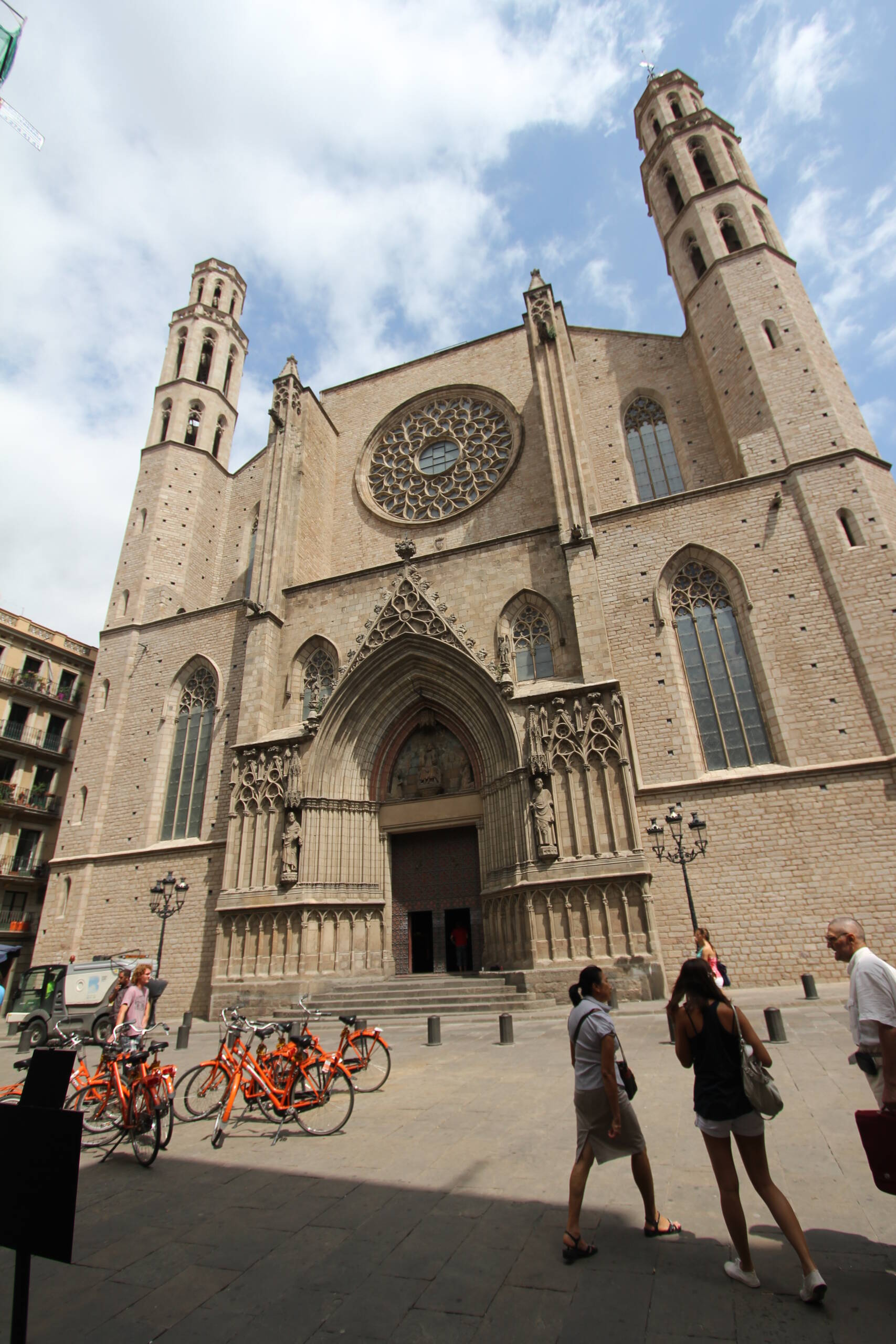There are churches that impress, and then there are churches that breathe. Santa Maria del Mar, tucked in the heart of El Born, belongs firmly to the latter. As I walked into the square, the sight of its towering façade hit me with an intensity that photographs never quite capture. The stone rises in clean, soaring lines, its twin octagonal towers reaching skyward as if they were stretched by centuries of prayer. The massive rose window in the center radiates a floral geometry that seems almost alive, a burst of light trapped in stone. Standing in front of it, I felt small, as if the building itself was leaning forward to remind me of how fleeting a single lifetime is compared to the centuries it has watched pass through this square.

The entrance draws you in with a slow gravity. Statues of saints flank the portal, weathered and worn yet full of dignity, their robes cascading in carved folds like frozen waves. Above them, the tympanum still tells its medieval stories, though softened by time, like whispers half-heard through the veil of history. What struck me most was the contrast: in front of this solemn façade stood a tangle of bright orange bicycles, part of the city’s shared bike system. Their loud color was almost comic against the muted sandstone, but it was also perfect—Barcelona is a city that thrives on contrasts, where the sacred and the everyday coexist without tension.
Around me, the square was alive. Tourists craned their necks for photographs, couples strolled hand in hand, and locals walked briskly past, giving the church only a passing glance, as if it were just another neighbor they had lived alongside forever. A group of friends paused to chat in the sunlit corner of the plaza, while a man leaned on his handlebars, gazing upward as if stunned by the sudden realization of what towered above him. I loved that moment—how Santa Maria del Mar managed to stop him mid-pedal, pulling him out of his routine.
This basilica carries a different kind of weight than many Gothic giants. It wasn’t built by kings or bishops, but by ordinary Barcelonans—fishermen, sailors, merchants—each contributing labor, money, and materials to bring it to life in the 14th century. It feels less like a monument to power and more like a monument to community. You sense it even from the outside, the way the building seems to belong to the square, not dominate it. When you finally step inside, the effect deepens: light streams through the tall windows, filling the nave with a soft glow that makes the massive columns almost disappear. The space is vast yet intimate, solemn yet welcoming, like being wrapped in the embrace of stone and silence.
Walking away, I kept glancing back at the façade, unwilling to leave it behind. Santa Maria del Mar is not just a church—it’s a reminder of how human effort, faith, and beauty can endure far longer than the hands that created it. It is Barcelona in microcosm: proud, layered, full of contradictions, and unforgettable.
Leave a Reply